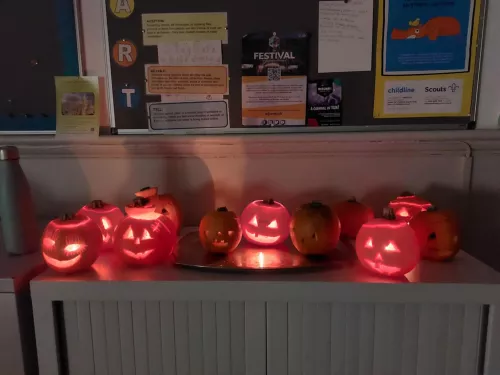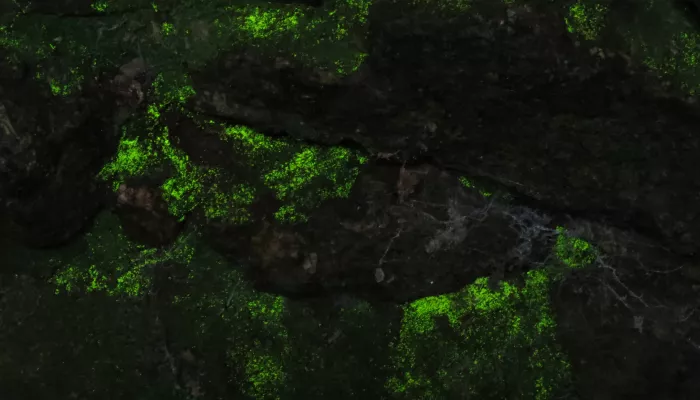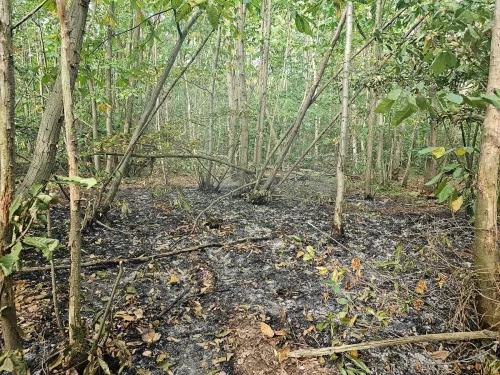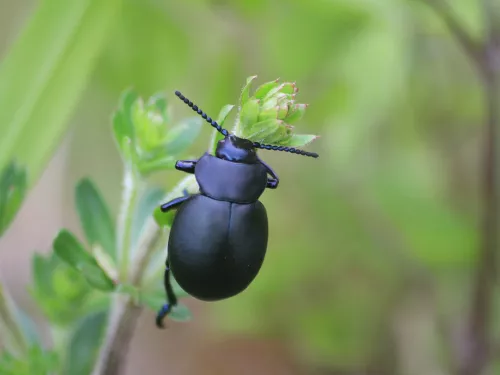
Green your Halloween: Sustainable tips from Folkestone Blue Influencers
Here's how to make your Halloween sustainable, from trick-or-treating more responsibly to using the entire pumpkin.

There are several ghosts haunting the UK’s wild places, from the scarily elusive ghost orchid to the ghost moth, named for the hovering display flight of the spectral white males. One of the most recently discovered is the ghost slug.
This predatory slug lives up to its name with a white or incredibly pale grey body. It also has some spooky habits, such as hunting earthworms through the soil at night. The ghost slug was only formally described and named in 2008, from specimens found in Wales. Its scientific name, Selenochlamys ysbryda¸references ysbryd, the Welsh word for ghost.
South Wales is its main haunt in the UK, though there have been sightings in a few other spots in England and Wales. However, it’s not thought to be a native to these shores and has also now been found in mountain forests in the Crimea.
Descend into the semi-darkness of certain caves and old, ancient structures and you might find the ultimate Halloween treat. These damp, dingy places are the perfect spot for goblins to hide their gold.
As the light starts to fade, look out for a golden-green glimmer on the rocks. A closer look will reveal moss sprawling across the surface, shifting from dull green to glowing as the light hits it just right.
This plucky plant is known as goblin’s gold. It has evolved to thrive in gloomy places, where it’s too dark for other plants to survive. To get enough sunlight to grow, the moss has tiny lens-like cells that focus the faint light onto its chloroplasts. The luminous glow is a delightful side effect of this superb survival strategy.
Actual goblins may be harder to find, but there are creatures that share their name lurking beneath bark, stones and leaf litter. Goblin spiders are tiny and pink. They emerge at night to hunt, sometimes scavenging prey from the webs of other spiders.
Witches are a common sight on Halloween night, travelling door-to-door, filling their cauldrons with sweets. But traces of witchery can be found in the wild all year round. Folklore and nature are often entangled, leading to many species taking on mystical names – and witches are a popular source of inspiration.
The most enchanting might be the Mother Shipton, a day-flying moth named for a famous prophetess from the 16th century. The dark markings on the moth’s wings take the shape of a caricatured witch’s face, complete with long nose and chin.
You won’t find a Mother Shipton in autumn, but there’s a whole coven of witch-themed wildlife to be discovered. There are fungi known as witch’s butter and witch’s hat – one a blackened, jelly-like lump, the other a conical waxcap. You might even find trees draped with witches’ whiskers, a bushy green beard lichen that thrives in woodlands with clean air.
Owls are often associated with witchcraft and the supernatural. The haunting hoot of a tawny owl even makes the soundtrack of countless horror movies. On screen it adds an eerie atmosphere to any dark woodland or ominous graveyard. In reality, it’s a wonderfully welcome sign that there’s a tawny in your neighbourhood!
Their most famous call is a long, quavering ‘hoo-ooo-oo’, usually from a male – though females have their own screechy version. However, you’re just as likely to hear a sharp ‘ke-wick’. This is a contact call, given by both sexes as they communicate across the treetops.
Autumn is a great time to hear tawny owls as they’re already setting up territories for the next breeding season – some may lay eggs as early as January. Adults will be looking to hold on to their existing domain, whilst this year’s young try to carve out their own space.
These are just a few of the wild wonders with a connection to the supernatural, how many more can you discover!

Here's how to make your Halloween sustainable, from trick-or-treating more responsibly to using the entire pumpkin.

From the phantom plate smasher of Bluebell Hill to the camping fires that put wildlife at risk at Blean Woods, the thoughtless actions of a minority are a source of horror among staff and volunteers at Kent Wildlife Trust.

You’ll often hear the words ‘bug’ and ‘beetle’ used interchangeably – but they actually mean two different things. Let's explore the differences!

Wilder Grazing Ranger Volunteer Trainee, Ellie Edmondson, talks about the fell ponies on our reserves and what makes them great conservation grazers.